The 1960s marked a revolutionary period in automotive history when the American love affair with massive, chrome-laden land yachts faced its first serious challenge from a new breed of vehicle: the compact car. Initially dismissed by automotive purists as underpowered economy boxes for the budget-conscious, many of these smaller machines surprised critics and consumers alike with unexpected driving dynamics, clever engineering, and even legitimate performance credentials. What these cars lacked in sheer size and straight-line muscle, they often made up for with nimble handling, innovative design, and a certain indefinable charm that continues to captivate enthusiasts decades later.
1. BMC Mini Cooper S
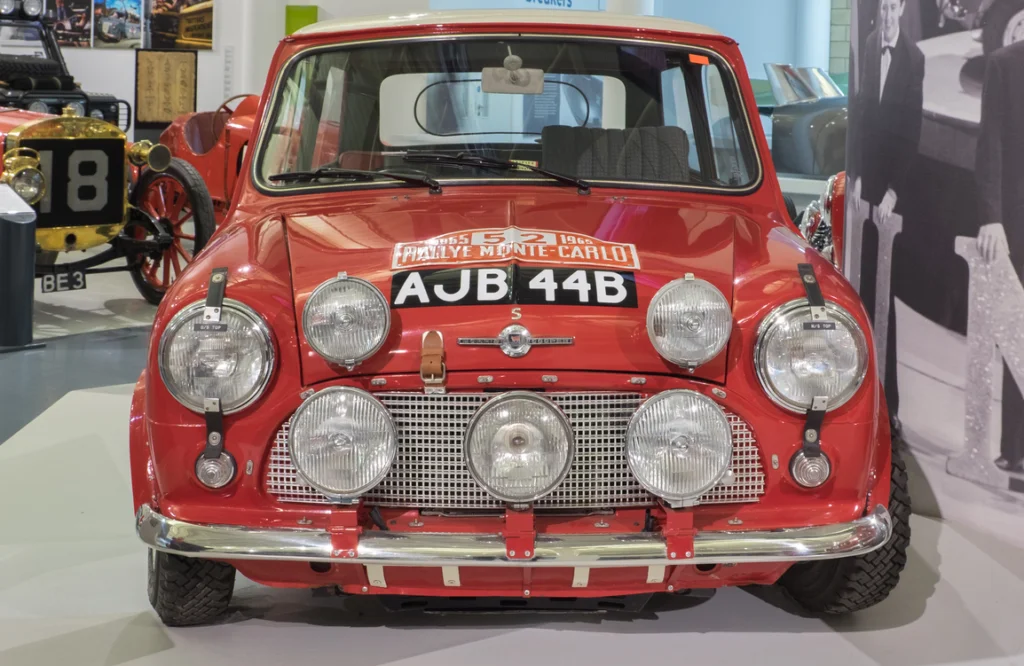
Few cars have ever combined compact dimensions and driving excitement as effectively as the Mini Cooper S, which transformed a humble economy car into a giant-slaying performance machine. The transverse-mounted engine and front-wheel drive layout—revolutionary for its time—created exceptional interior space while the car’s tiny 10-inch wheels pushed to the extreme corners delivered go-kart handling that larger sports cars couldn’t match. When John Cooper worked his magic on the standard Mini, adding more power and better brakes, he created a legitimate motorsport competitor that went on to dominate the Monte Carlo Rally with wins in 1964, 1965, and 1967. Mini USA traces this car from its origins and inspiration.
The Mini’s performance capabilities seemed impossible given its diminutive stature—a testament to designer Alec Issigonis’s genius and Cooper’s tuning prowess. The car’s low center of gravity, wide track relative to its length, and direct steering created a driving experience that felt hardwired to the driver’s nervous system, providing immediate feedback and response that made every corner an exercise in controlled joy. Celebrity owners like Beatles members, film stars, and racing drivers added glamour to the Mini’s practical appeal, cementing its status as the compact car that permanently changed perceptions about what small automobiles could achieve in terms of both performance and cultural impact.
2. Ford Cortina Lotus
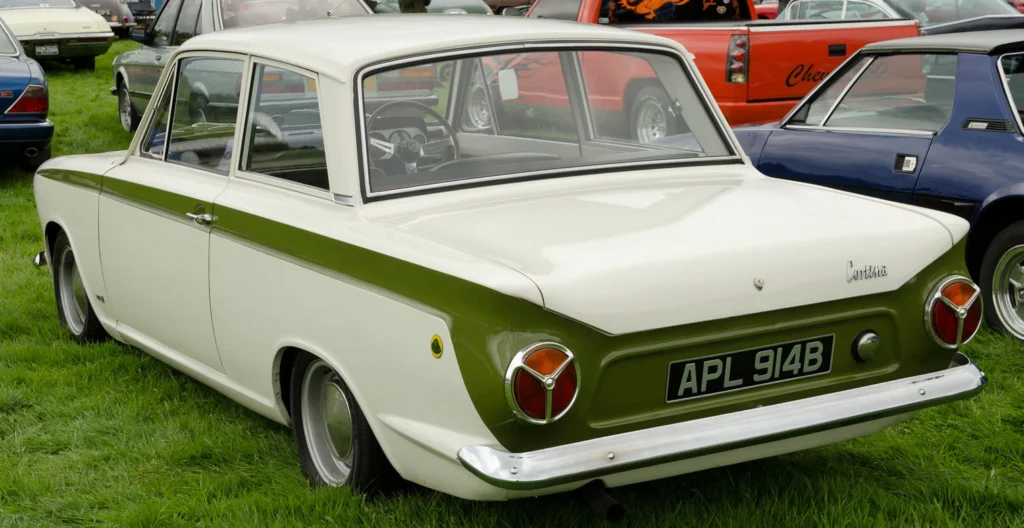
When Ford decided to inject some excitement into their sensible Cortina sedan, they turned to Lotus founder Colin Chapman, whose expertise in lightweight construction and performance tuning transformed the humble family car into something extraordinary. The Lotus-Cortina (or Cortina Lotus as it was officially known) featured a Lotus-developed 1.6-liter twin-cam engine producing 106 horsepower, along with significantly upgraded suspension, brakes, and a close-ratio gearbox. The distinctive white paint with green side stripes announced this wasn’t your accountant’s Cortina, while aluminum doors, hood, and trunk lid helped reduce weight to maximize the car’s performance potential. Hagerty takes a deep dive into this car that sometimes gets overlooked.
The Cortina Lotus dominated saloon car racing throughout the mid-1960s, with legendary drivers like Jim Clark demonstrating its capabilities by lifting the inside front wheel during hard cornering—a visual testament to the car’s remarkable handling characteristics. Daily drivers of the Cortina Lotus enjoyed a Jekyll-and-Hyde machine that could accommodate family duties during the week and transform into a legitimate sports car on weekend drives or at local racing events. This successful collaboration between Ford and Lotus established a template for compact performance cars that continues to influence manufacturers today: take an ordinary family sedan, add significant engineering improvements rather than just cosmetic changes, and create something that delivers genuine driving pleasure without sacrificing practicality.
3. Alfa Romeo Giulia Sprint GT
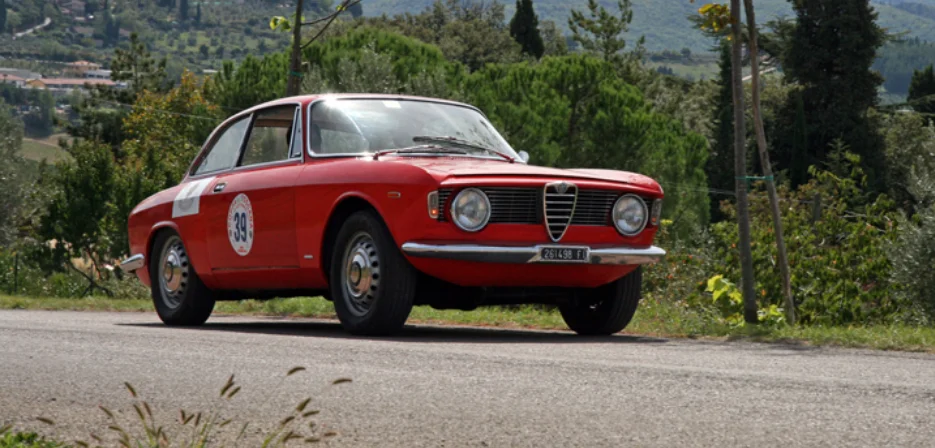
The Giulia Sprint GT combined Italian styling elegance with engineering sophistication in a compact package that delivered driving pleasure far beyond its modest dimensions. Designed by Giorgetto Giugiaro during his time at Bertone, the car’s distinctive “step-front” nose and perfect proportions created a timeless design that somehow managed to look both sophisticated and playful simultaneously. Under the shapely hood lurked a 1.6-liter twin-cam engine that produced a modest-sounding 106 horsepower but delivered it with such mechanical enthusiasm and aural delight that drivers couldn’t help but seek out tunnels just to hear the engine note reverberate off the walls. FCA Heritage traces this car’s unique history.
The Giulia’s perfect weight distribution, precise five-speed gearbox, and remarkably communicative steering created a driving experience that made every journey feel special, no matter how mundane the destination. Alfa Romeo’s racing heritage was evident in the way the chassis communicated with the driver, offering progressive handling limits that could be explored safely even by those without competition experience. Automotive journalists of the era frequently expressed surprise at how a practical four-seat coupe could deliver such engaging performance, establishing the Giulia Sprint GT as the thinking driver’s compact car that prioritized balance and feedback over brute force.
4. Chevrolet Corvair Monza
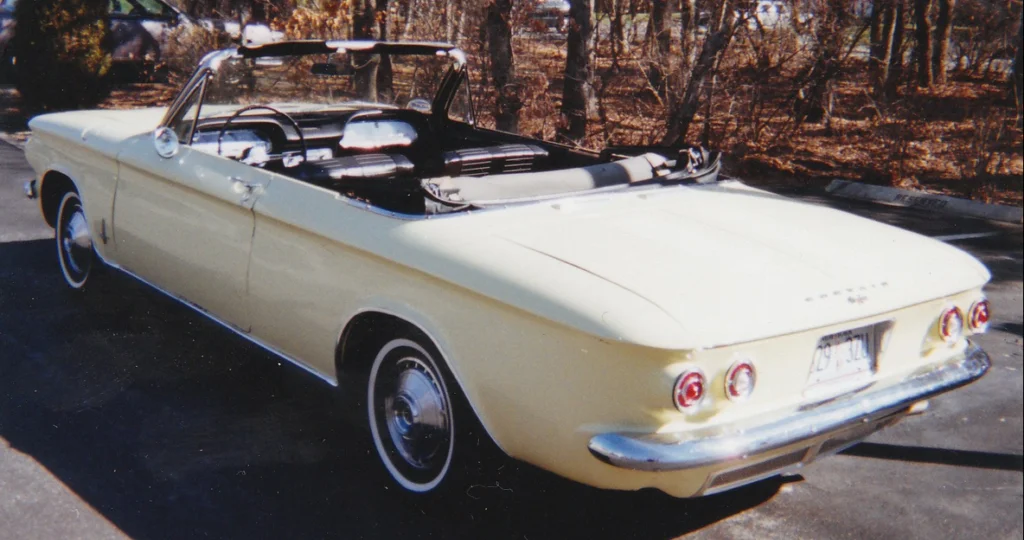
Despite the controversy that would later surround it, the Corvair represented American engineering at its most innovative, introducing rear-engine design and independent suspension to the conservative domestic market. The Monza variant, particularly in turbocharged form, transformed what was conceived as basic transportation into a surprisingly capable sports coupe that could challenge European imports on their own terms. The air-cooled flat-six engine produced a distinctive sound unlike anything else in Chevrolet showrooms, while the weight distribution created handling characteristics that rewarded skilled drivers who understood the car’s unique dynamics.
When properly set up and driven with awareness of its design characteristics, the Corvair Monza could carve through corners with remarkable poise, particularly after the second-generation models introduced significantly improved suspension geometry. Enthusiast magazines of the era praised the car’s communicative steering, comfortable ride, and the way it responded to subtle weight transfers during spirited driving. Ralph Nader’s criticism in “Unsafe at Any Speed” overshadowed the Corvair’s legitimate accomplishments, but driving enthusiasts who looked beyond the controversy discovered a compact American car that offered a genuinely European driving experience at a fraction of the cost of imported alternatives.
5. Datsun 510
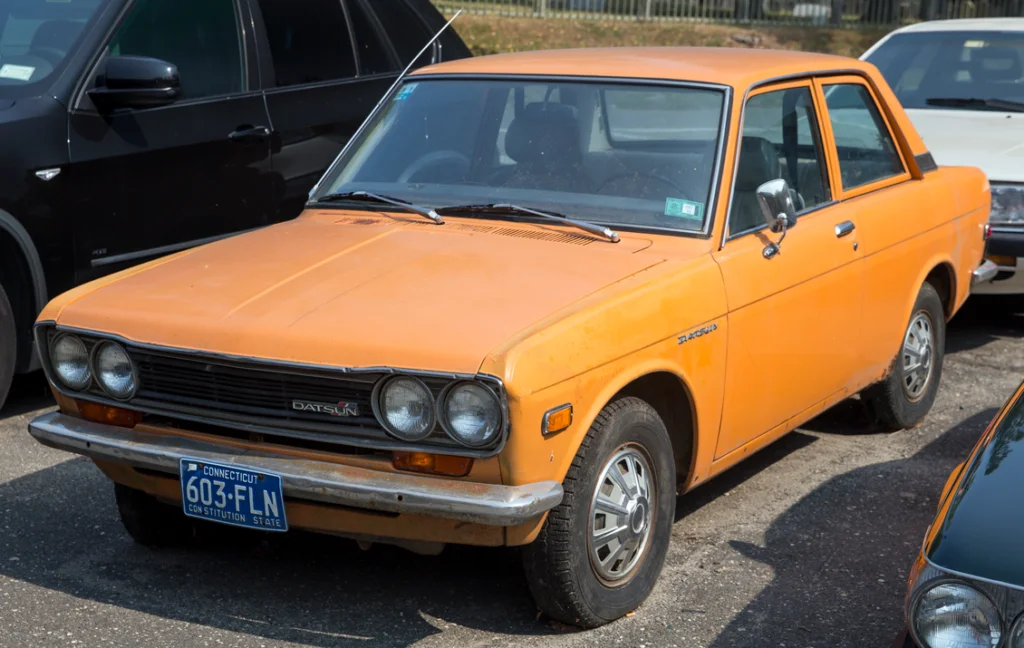
Often referred to as the “poor man’s BMW,” the Datsun 510 brought European-style handling and design sensibilities to the Japanese compact car segment at a price point that made performance accessible to average consumers. The boxy, clean-lined sedan featured a sturdy MacPherson strut front suspension and independent semi-trailing arm rear suspension that provided handling capabilities far beyond what its modest appearance suggested. The robust 1.6-liter overhead-cam engine proved both reliable and responsive, while also offering excellent tuning potential for those inclined to modify their vehicles.
Racing successes in the hands of drivers like Peter Brock legitimized the 510’s performance credentials, demonstrating that this unassuming Japanese compact could compete with—and often beat—more expensive European machinery. The car’s combination of affordability, reliability, and genuine driving pleasure helped establish Datsun (later Nissan) as a serious player in the North American market, changing perceptions about Japanese automobiles from mere economy transportation to legitimate enthusiast options. Surviving examples have become highly sought after by collectors who appreciate the 510’s historical significance and the pure, uncomplicated driving experience it provides—a testament to engineering that prioritized driver engagement over flashy styling or luxury pretensions.
6. Renault 8 Gordini
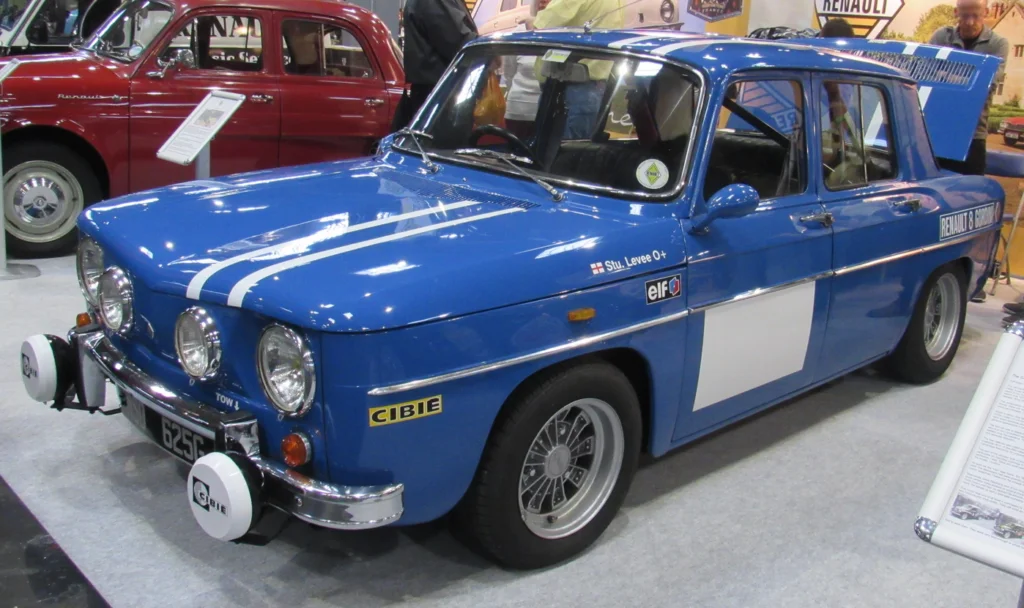
The French approach to compact performance took form in the Renault 8 Gordini, which transformed a modest family sedan into a legitimate competition machine through the wizardry of Amédée Gordini. The “Wizard of Tuning” extracted 95 horsepower from the rear-mounted 1.1-liter engine (later expanded to 1.3 liters), added four-wheel disc brakes (an innovation at this price point), and upgraded the suspension to create a giant-killer that dominated European touring car racing throughout the mid-1960s. The distinctive French blue paint with white stripes announced this was no ordinary Renault, while the interior’s additional gauges and bucket seats prepared drivers for the performance capabilities lurking beneath the unassuming bodywork.
The car’s rear-engine layout created unique handling characteristics that, once mastered, allowed drivers to rotate the car through corners with remarkable precision and control. Renault established a one-make racing series for the Gordini that became a proving ground for upcoming driving talent, while street versions provided enthusiasts with competition-proven technology in a practical package that could serve as daily transportation between weekend racing events. The 8 Gordini established a performance tradition that Renault would continue with subsequent models, proving that compact dimensions and modest displacement were no barrier to creating cars with legitimate sporting credentials and distinctive character.
7. Saab 96

Sweden’s contribution to the compact performance scene came in the form of the Saab 96, whose aerodynamic shape reflected the company’s aircraft manufacturing heritage. The front-wheel-drive layout provided excellent traction in adverse conditions, while the column-mounted shifter for the four-speed manual transmission represented a unique approach to interior ergonomics that prioritized functionality over convention. Early models featured a three-cylinder two-stroke engine that produced a distinctive sound and surprising performance when properly tuned, while later versions received a more conventional V4 engine sourced from Ford that improved reliability without sacrificing the car’s unique character.
The 96 achieved international recognition through its remarkable rally successes, particularly in the hands of driver Erik Carlsson, whose exploits earned him the nickname “Carlsson on the Roof” due to his tendency to roll the car during particularly aggressive driving yet continue competing. The car’s front-wheel drive layout, excellent visibility, and predictable handling made it particularly effective on slippery surfaces, where more powerful rear-wheel drive competitors struggled to apply their power effectively. Everyday drivers appreciated the same qualities that made the 96 successful in competition—stability in adverse conditions, predictable handling at the limits, and engineering that prioritized safety and control over outright speed—establishing Saab as a manufacturer that approached automotive design from a different perspective than its contemporaries.
8. Morris/Austin Mini Cooper
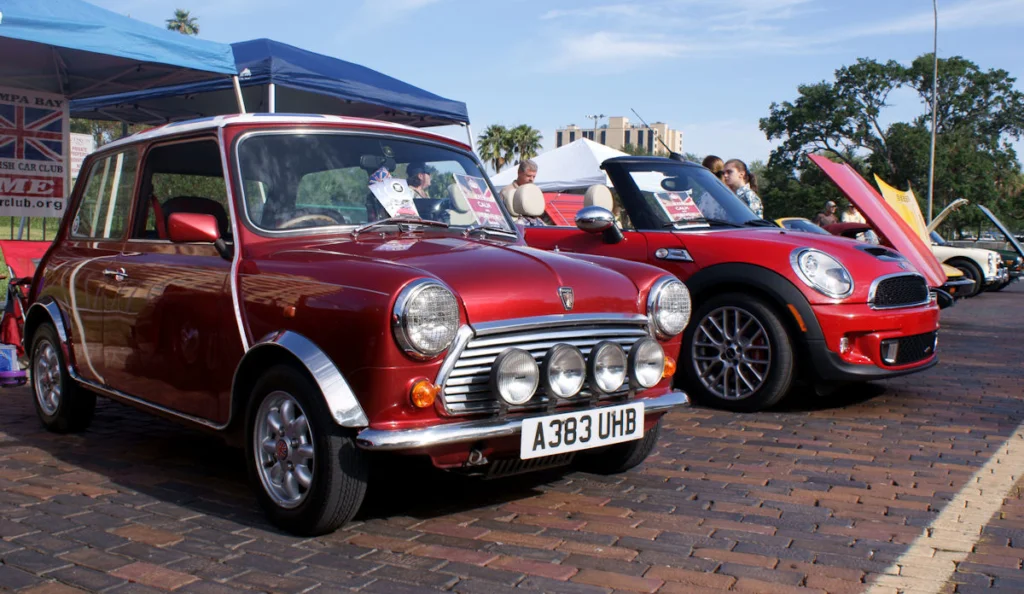
The standard Mini already represented a packaging miracle, but the Cooper and Cooper S versions elevated the basic concept to performance levels that seemed impossible given the car’s tiny dimensions. The Cooper’s distinctive styling touches—two-tone paint, wider wheels, and additional gauges—signaled its performance intentions, but it was the driving experience that truly converted skeptics. The car’s quick steering, minimal body roll, and ability to change direction almost instantaneously created a driving experience that made conventional sports cars feel ponderous by comparison.
The Mini Cooper’s most remarkable quality was how it transformed ordinary driving into an occasion—every trip to the grocery store became an opportunity to explore the car’s handling limits, threading through traffic with a nimbleness that larger vehicles simply couldn’t match. The car’s giant-killing performance on racing circuits and rally stages transferred directly to public roads, where drivers could enjoy the same precise handling and mechanical sympathy that made the Mini such a formidable competition machine. Even today, few cars at any price point can match the pure, undiluted driving joy that a properly sorted Mini Cooper delivers—a testament to a design that prioritized driving dynamics over almost everything else.
9. Fiat 850 Sport Coupe
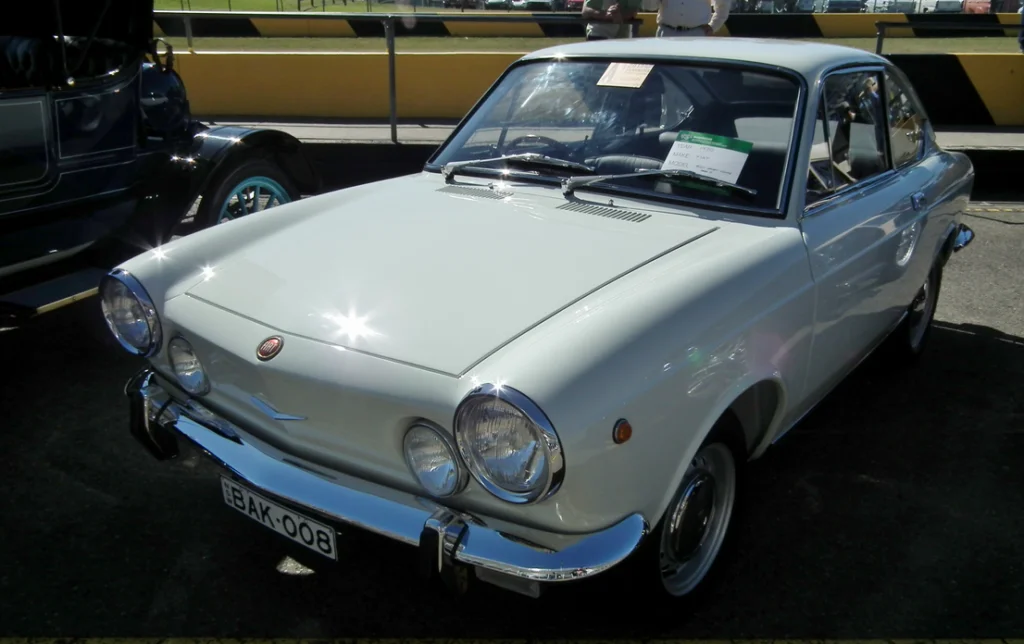
When Fiat decided to transform their basic 850 sedan into something more sporting, they turned to design house Bertone to create a sleek fastback body that belied the car’s humble mechanical origins. The resulting Sport Coupe featured a rear-mounted 843cc engine that produced a modest 52 horsepower, but the car’s light weight and balanced chassis made the most of this output. The distinctive styling included quad headlamps and a stylish interior with proper bucket seats and a wood-rimmed steering wheel that added a touch of sophistication to this affordable sports coupe.
The 850’s rear-engine layout created handling characteristics that rewarded smooth driving inputs and proper technique, teaching novice drivers valuable lessons about weight transfer and momentum. Despite its small displacement, the engine’s willingness to rev and the car’s excellent gearbox made maintaining momentum through corners a satisfying exercise in mechanical sympathy. The Sport Coupe demonstrated that driving pleasure wasn’t necessarily correlated with raw power or top speed—more important were balance, feedback, and the way a car responded to driver inputs, areas where this diminutive Fiat excelled beyond expectations.
10. Toyota Corona 1600GT
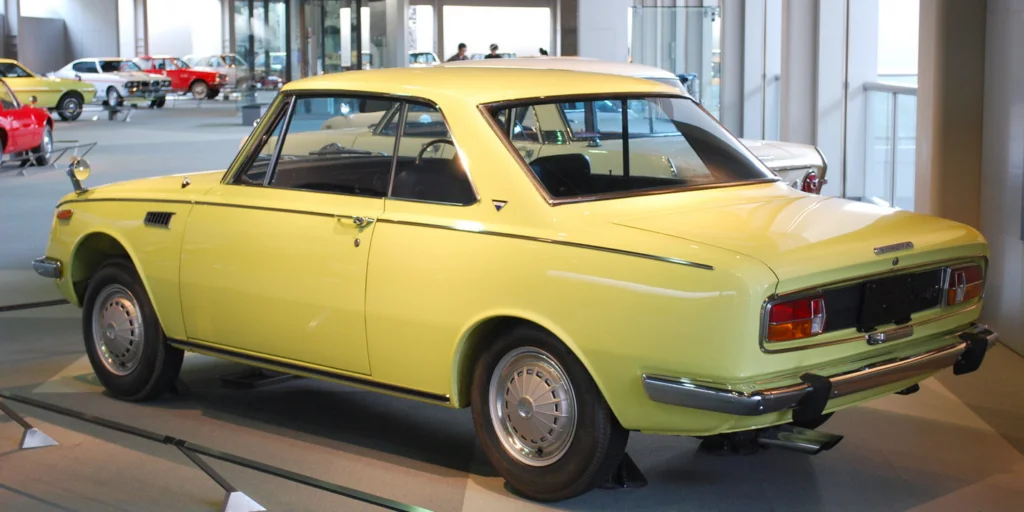
While Toyota was building its reputation for reliability with sensible sedans, the Corona 1600GT showed the company could also produce legitimately sporting machinery when it chose to. The GT variant featured a twin-cam 1.6-liter engine developed with Yamaha that produced 110 horsepower—a remarkable output for its displacement and evidence of Toyota’s growing engineering prowess. The car’s understated styling gave little indication of its performance potential, but the additional gauges, woodgrain steering wheel, and more supportive seats hinted at sporting intentions that became immediately apparent once behind the wheel.
The 1600GT’s perfect balance between ride comfort and handling precision made it exceptional for long-distance touring, where its mechanical refinement and unexpected performance could be fully appreciated. Contemporary road tests praised the car’s smooth power delivery, precise shifter, and predictable handling—qualities that would become hallmarks of Toyota’s more celebrated performance models in subsequent decades. The Corona 1600GT remains less well-known than other Japanese performance cars of the era, but those who have experienced one recognize it as evidence that Toyota understood the essence of driving pleasure long before the Supra and MR2 brought that knowledge to wider attention.
11. NSU Prinz 1000 TT
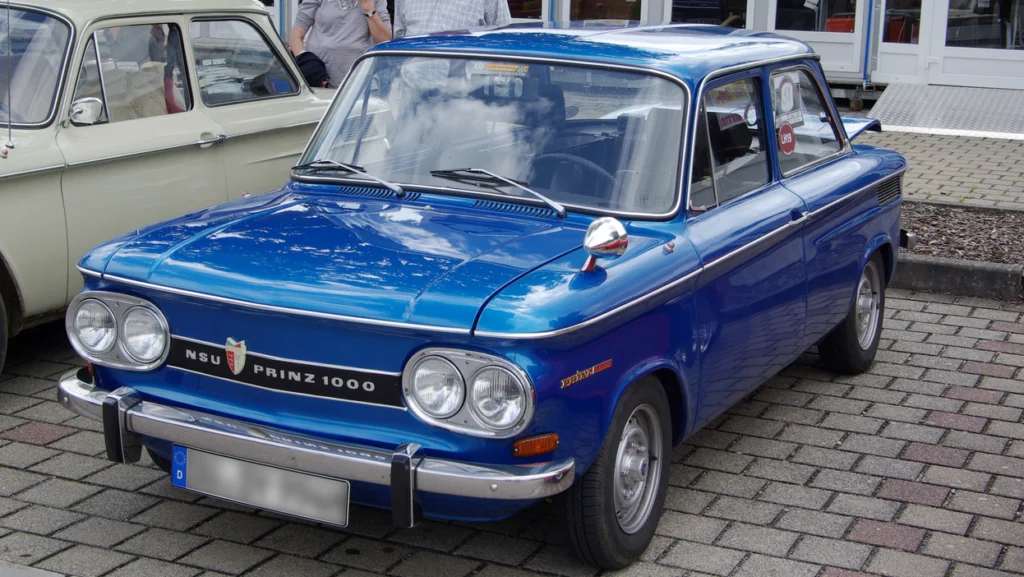
German manufacturer NSU packed remarkable engineering into their compact Prinz, particularly in the performance-oriented TT variant that featured a rear-mounted air-cooled engine producing up to 65 horsepower—impressive output from just one liter of displacement. The car’s lightweight construction and advanced suspension geometry created handling capabilities that belied its diminutive dimensions and modest price point. The distinctive styling featured a smoothly curved rear deck housing the engine and a clean, functional interior focused on the business of driving rather than luxury pretensions.
The TT’s rear-engine layout and limited wheelbase created unique handling characteristics that demanded respect but rewarded skilled drivers with remarkable cornering capabilities. Enthusiast magazines of the era frequently expressed surprise at how this modest German compact could keep pace with more powerful machinery on winding roads, where its light weight and responsive handling allowed it to maintain momentum through corners. NSU’s motorcycle racing heritage was evident in the way the engine loved to rev and the precision of the controls, creating a driving experience that felt more engaging and sophisticated than the car’s modest specifications might suggest.
12. Hillman Imp
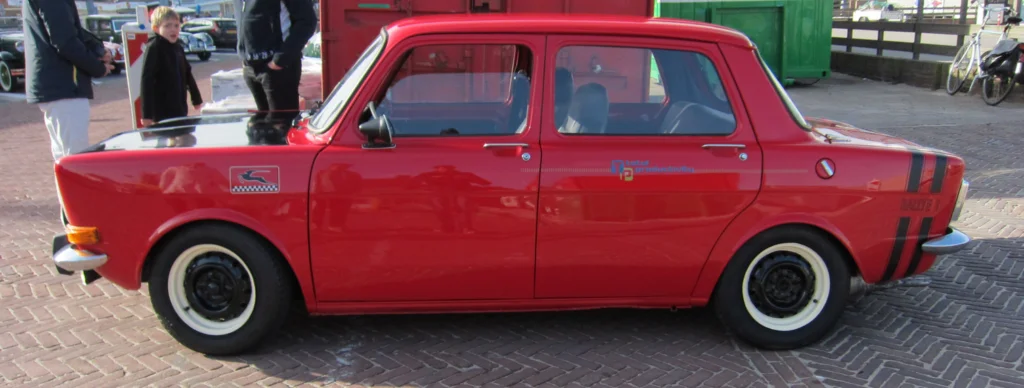
British manufacturer Rootes Group took an unconventional approach with the Imp, creating a rear-engined compact that served as Great Britain’s answer to the European small car revolution. The Imp featured an aluminum engine derived from a Coventry Climax fire pump design, offering lightweight construction and surprising performance for its modest displacement. The car’s innovative features included a unique opening rear window that improved access to the luggage compartment—a clever solution to the packaging challenges inherent in the rear-engine layout.
The Imp’s handling characteristics distinguished it from competitors, with precise steering and remarkable balance making it feel more sophisticated than its price point suggested. Racing and rally versions demonstrated the car’s inherent capabilities, with the Imp proving particularly successful in the hands of drivers who appreciated its unique handling characteristics and willingness to rev. Though often overshadowed by the Mini in British motoring history, the Imp represented a distinctly different approach to compact car design that prioritized engineering sophistication over simplicity—a philosophy that created one of the most engaging driving experiences available in a British economy car of the era.
The compact cars of the 1960s demonstrated that driving enjoyment wasn’t necessarily tied to size, power, or price—more important were balance, feedback, and thoughtful engineering that prioritized the connection between driver and machine. These twelve examples represent different approaches to creating engaging driving experiences within compact dimensions, from European sophistication to American innovation to Japanese precision. Their influence extends far beyond their production numbers, establishing principles that continue to define engaging automobiles regardless of size or market segment. In an era increasingly focused on utility and technological isolation, these simple, communicative machines remind us that the joy of driving is about more than specifications—it’s about how a car makes you feel behind the wheel.


